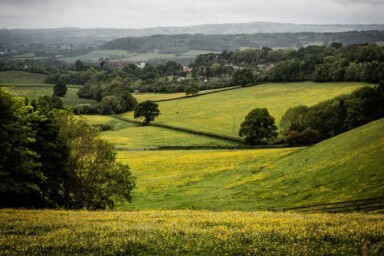President Biden has nominated Tom Vilsack to be the Secretary of Agriculture. Once confirmed by the Senate, he will take up the role at the USDA. The Vilsack name might be familiar to SFT readers – he served as Secretary of Agriculture under President Obama from 2009 to 2017. Given the pressures on the new administration to right the ship of state quickly, President Biden seems to have chosen a safe pair of hands, after the storms and squalls of the last four years.
As the head of the USDA, Vilsack faces considerable challenges. With the climate crisis bearing down, trade wars with China damaging US farmers, and food insecurity rising due to COVID-19, he needs to hit the ground running. Biden’s decision to appoint someone who already understands the dynamics of the department seems a smart thing to do, and Vilsack will be able to work effectively and efficiently since he has already held the position.
Vilsack is particularly well-placed to address the tensions caused by the trade wars with Chinaand the impact on soy and corn producers in the Midwest. As a result of President Trump’s trade war with China, President Jinping imposed tariffs on thousands of US agricultural products, including pork, soybeans and corn. If the Biden administration want to overcome this trade war and get agricultural products flowing once again, they will need Vilsack to soothe the fears of Midwestern farmers. Having served as Governor of Iowa from 1999 to 2007 and supported farming interests at a national and international level, he should be able to build confidence in the new administration. In fact, Iowa Farmers Union President Aaron Lehman has already said Vilsack’s role in Biden’s Cabinet is ‘tremendously important in helping on trade issues’.
However, beyond the immediate challenges, as Secretary, Vilsack has the power to influence and direct the future of the US food system. It is here that the criticism of President Biden’s decision rests. Many hoped that a new, exciting and dynamic leader would be appointed to the role, as opposed to the old guard, which Vilsack firmly represents.
Due to his ties to Iowa and the Midwest, Vilsack has been a strong supporter of biofuels. In fact, he was renowned within the Obama administration for being their biggest cheerleader. With the climate crisis at the top of President Biden’s agenda, and the US re-entry into the Paris Agreement on the cards, there will likely be a re-examination of green energy. With Vilsack in the Cabinet, he will surely advocate for a future where bioethanol plays a considerable role, expanding the monoculture cultivation of GM soy and corn that biofuels will bring, even further across the country.
However, climate is not the only controversial issue facing the USDA. One of the key tensions within the department is that it is responsible for food poverty and nutrition programmes, in addition to agriculture and farming policy. This creates division as there is a perception (if flawed) that hunger and food poverty is an urban issue, while agriculture and farming is a rural one. Sadly, this is a mistaken but common presumption. There is not such a clear distinction since high levels of hunger occur in rural areas, while peri-urban and urban farming is becoming more and more wide-spread. Consequently, policy solutions for hunger need to work in both rural and urban areas, as does financial support for food production. However, many hoped that Biden would appoint someone with a strong background in alleviating food poverty and with closer ties to urban communities. Food and Water Watch, a leading US NGO on food security, created a petition to highlight the need for a nominee with stronger nutrition priorities that was signed by 150 different groups.
Representative Marcia Fudge, a Democratic Congresswoman from Ohio’s 11th District, was considered a strong contender for the role. Serving on the House of Representative’s Agriculture Committee and as an expert in food poverty, she has a strong understanding of both sides of the USDA portfolio. Moreover, had she been appointed, she would have been the first Black woman to hold the role of Secretary of Agriculture. Since the USDA’s founding under President Lincoln, only one African American, Mike Espy, has led the agency. In her bid for the job, she told journalists that she deserved to be considered for the USDA, saying ‘You know, it’s always “we want to put the Black person in labor or HUD”’ (Housing and Urban Development), and continued by emphasising the important role that African American women played in Biden’s victory. Unfortunately, this argument didn’t prove persuasive enough to Biden’s transition team. She was passed over for Vilsack at the USDA but was nominated as the Secretary for HUD.
Only time will tell whether Vilsack will deliver the bold vision required to make the future of US agriculture both economically and environmentally sustainable where farmers and ranchers can make a living without damaging the land, and help to end hunger across the nation. Or whether he will stick to the status quo and continue with policies of the past. If he can learn from the successes and failures of his first tenure, he should be in a good position to deliver on the administration’s promises. However, new voices are needed, and new perspectives are required if the future of farming is to be representative of all Americans. A more diverse senior leadership at the USDA would help to challenge flawed notions of agriculture as a rural issue, help strengthen urban farming programmes and increase the department’s focus on hunger. Who knows, it might also pave the way for a more progressive choice for Secretary in 2024?
Photograph: Robert Claypool





